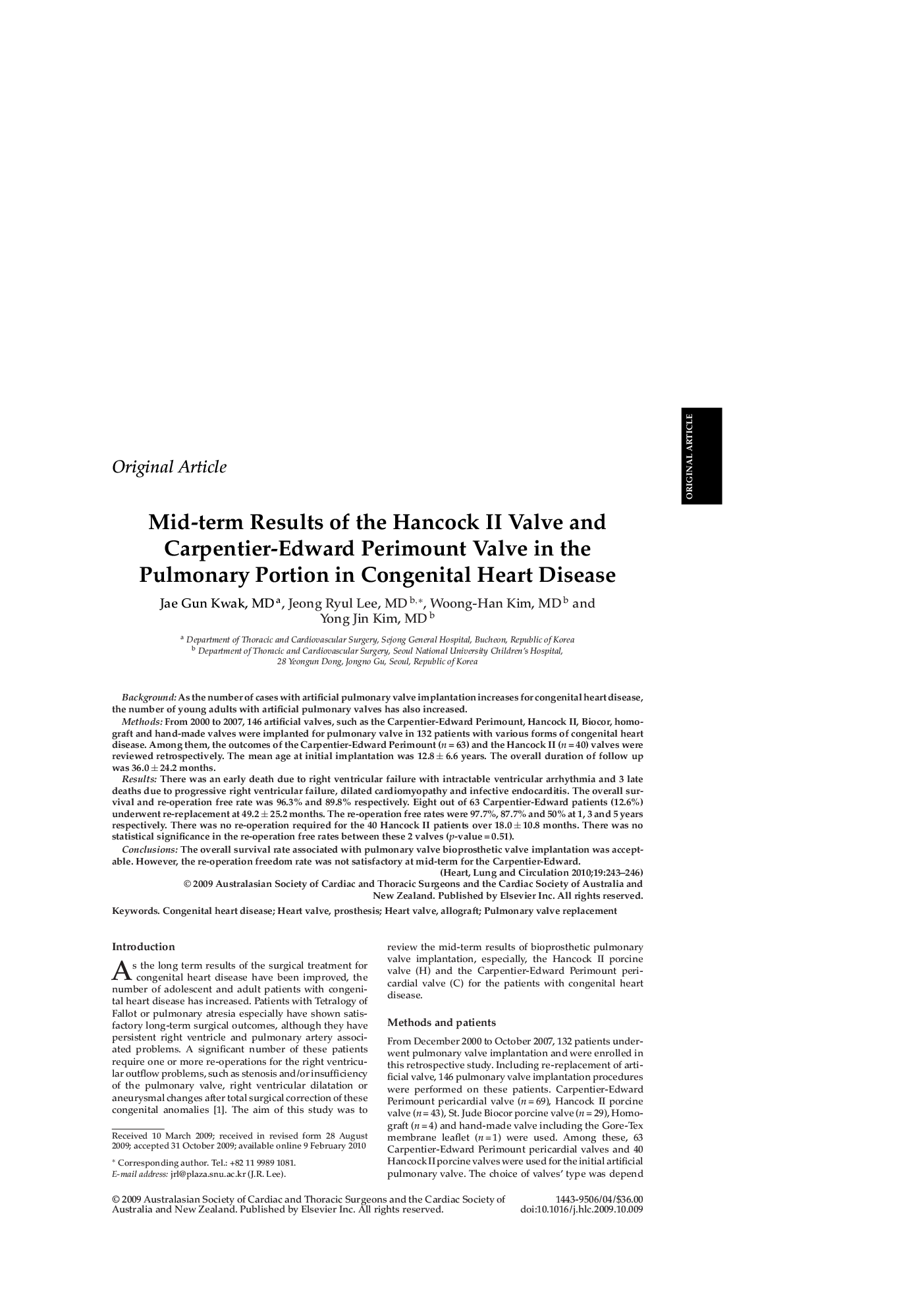| Article ID | Journal | Published Year | Pages | File Type |
|---|---|---|---|---|
| 2920932 | Heart, Lung and Circulation | 2010 | 4 Pages |
BackgroundAs the number of cases with artificial pulmonary valve implantation increases for congenital heart disease, the number of young adults with artificial pulmonary valves has also increased.MethodsFrom 2000 to 2007, 146 artificial valves, such as the Carpentier-Edward Perimount, Hancock II, Biocor, homograft and hand-made valves were implanted for pulmonary valve in 132 patients with various forms of congenital heart disease. Among them, the outcomes of the Carpentier-Edward Perimount (n = 63) and the Hancock II (n = 40) valves were reviewed retrospectively. The mean age at initial implantation was 12.8 ± 6.6 years. The overall duration of follow up was 36.0 ± 24.2 months.ResultsThere was an early death due to right ventricular failure with intractable ventricular arrhythmia and 3 late deaths due to progressive right ventricular failure, dilated cardiomyopathy and infective endocarditis. The overall survival and re-operation free rate was 96.3% and 89.8% respectively. Eight out of 63 Carpentier-Edward patients (12.6%) underwent re-replacement at 49.2 ± 25.2 months. The re-operation free rates were 97.7%, 87.7% and 50% at 1, 3 and 5 years respectively. There was no re-operation required for the 40 Hancock II patients over 18.0 ± 10.8 months. There was no statistical significance in the re-operation free rates between these 2 valves (p-value = 0.51).ConclusionsThe overall survival rate associated with pulmonary valve bioprosthetic valve implantation was acceptable. However, the re-operation freedom rate was not satisfactory at mid-term for the Carpentier-Edward.
